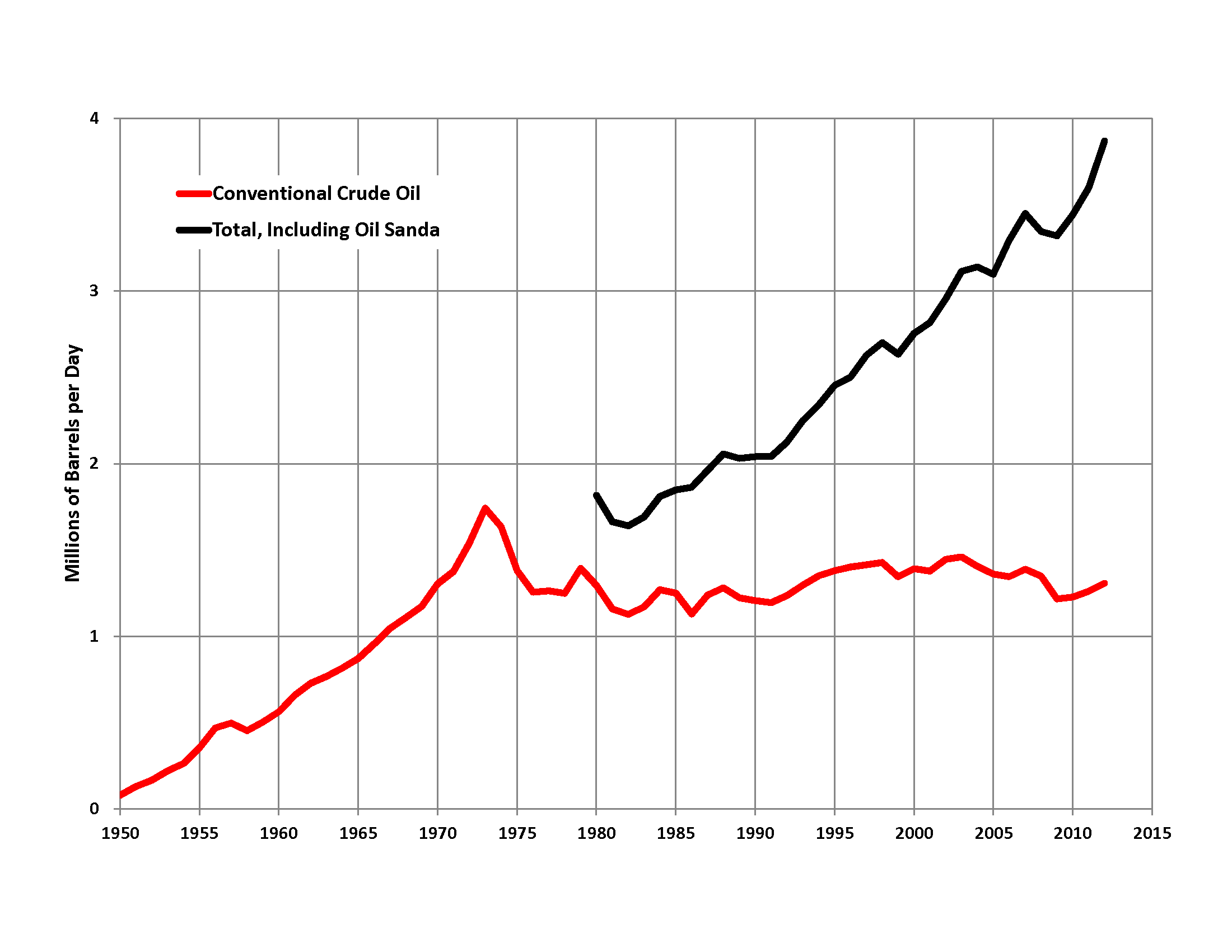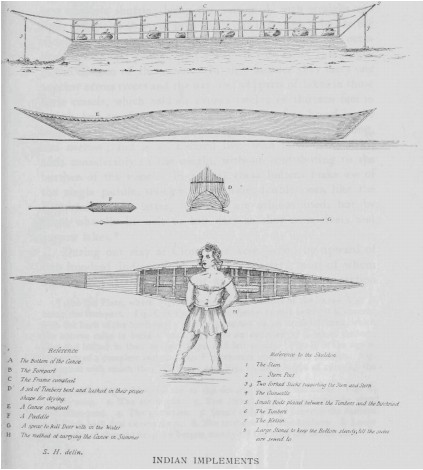|
Norman Wells Proven Area Agreement
{{unreferenced, date=June 2013 The Norman Wells Proven Area Agreement, signed in 1944 by the federal government of Canada and Imperial Oil Limited, grants Imperial Oil the exclusive right and privilege to drill for, mine, win and extract all of the petroleum and natural gas from this field for three terms of 21 years. The Agreement was valid until the year 2008. Norman Wells is on the Mackenzie River in the Northwest Territories. Under the Proven Area Agreement, Imperial Oil was designated the Operator of the project and given full control of the development and operation of the Proven Area and bears all the yearly up-front costs, charges and expenses incurred with the development and production of the proven area. The Government of Canada The government of Canada (french: gouvernement du Canada) is the body responsible for the federal administration of Canada. A constitutional monarchy, the Crown is the corporation sole, assuming distinct roles: the executive, as the ''Crow ... [...More Info...] [...Related Items...] OR: [Wikipedia] [Google] [Baidu] |
Imperial Oil
Imperial Oil Limited (French: ''Compagnie Pétrolière Impériale Ltée'') is a Canadian petroleum company. It is Canada's second-biggest integrated oil company. It is majority owned by American oil company ExxonMobil with around 69.6 percent ownership stake in the company. It is a significant producer of crude oil, diluted bitumen and natural gas, Canada's major petroleum refiner, a key petrochemical producer and a national marketer with coast-to-coast supply and retail networks. It supplies Esso-brand service stations. It is also known for its holdings in the Alberta Oil Sands. Imperial owns 25 percent of Syncrude, which is one of the world's largest oil sands operations. Imperial is also in a joint venture oil sands mining operation with ExxonMobil, called Kearl Oil Sands. Imperial Oil is headquartered in Calgary, Alberta. It was based in Toronto, Ontario, until 2005. Most of Imperial's production is from its vast natural resource holdings in the Alberta oil sands and ... [...More Info...] [...Related Items...] OR: [Wikipedia] [Google] [Baidu] |
Norman Wells
Norman Wells ( Slavey language: ''Tłegǫ́hłı̨'' "where there is oil") is a town located in the Sahtu Region, Northwest Territories, Canada, settled about 140 km (87 mi) south of the Arctic Circle. The town, which hosts the Sahtu Regional office, is situated on the north side of the Mackenzie River and provides a view down the valley of the Franklin and Richardson mountains. Demographics In the 2021 Census of Population conducted by Statistics Canada, Norman Wells had a population of living in of its total private dwellings, a change of from its 2016 population of . With a land area of , it had a population density of in 2021. A total of 315 people identified as Indigenous, and of these, 195 were First Nations, 80 were Métis, 15 were Inuit and 20 gave multiple Indigenous responses. The main languages in the town are North Slavey and English. Of the population, 78.1% is 15 and older, with the median age being 32.8, slightly less than the NWT averages of 79.3% ... [...More Info...] [...Related Items...] OR: [Wikipedia] [Google] [Baidu] |
Northwest Territories
The Northwest Territories (abbreviated ''NT'' or ''NWT''; french: Territoires du Nord-Ouest, formerly ''North-Western Territory'' and ''North-West Territories'' and namely shortened as ''Northwest Territory'') is a federal territory of Canada. At a land area of approximately and a 2016 census population of 41,790, it is the second-largest and the most populous of the three territories in Northern Canada. Its estimated population as of 2022 is 45,605. Yellowknife is the capital, most populous community, and only city in the territory; its population was 19,569 as of the 2016 census. It became the territorial capital in 1967, following recommendations by the Carrothers Commission. The Northwest Territories, a portion of the old North-Western Territory, entered the Canadian Confederation on July 15, 1870. Since then, the territory has been divided four times to create new provinces and territories or enlarge existing ones. Its current borders date from April 1, 1999, when t ... [...More Info...] [...Related Items...] OR: [Wikipedia] [Google] [Baidu] |
Government Of Canada
The government of Canada (french: gouvernement du Canada) is the body responsible for the federal administration of Canada. A constitutional monarchy, the Crown is the corporation sole, assuming distinct roles: the executive, as the ''Crown-in-Council''; the legislature, as the ''Crown-in-Parliament''; and the courts, as the ''Crown-on-the-Bench''. Three institutions—the Privy Council ( conventionally, the Cabinet); the Parliament of Canada; and the judiciary, respectively—exercise the powers of the Crown. The term "Government of Canada" (french: Gouvernement du Canada, links=no) more commonly refers specifically to the executive— ministers of the Crown (the Cabinet) and the federal civil service (whom the Cabinet direct)—which corporately brands itself as the ''Government of Canada'', formally known as '' Majesty's Government'' (french: Gouvernement de Sa Majesté, links=no). There are over one hundred ministries, departments and crown corporations and over 300 ... [...More Info...] [...Related Items...] OR: [Wikipedia] [Google] [Baidu] |
Economy Of The Northwest Territories
The Northwest Territories (abbreviated ''NT'' or ''NWT''; french: Territoires du Nord-Ouest, formerly ''North-Western Territory'' and ''North-West Territories'' and namely shortened as ''Northwest Territory'') is a federal territory of Canada. At a land area of approximately and a 2016 census population of 41,790, it is the second-largest and the most populous of the three territories in Northern Canada. Its estimated population as of 2022 is 45,605. Yellowknife is the capital, most populous community, and only city in the territory; its population was 19,569 as of the 2016 census. It became the territorial capital in 1967, following recommendations by the Carrothers Commission. The Northwest Territories, a portion of the old North-Western Territory, entered the Canadian Confederation on July 15, 1870. Since then, the territory has been divided four times to create new provinces and territories or enlarge existing ones. Its current borders date from April 1, 1999, when the t ... [...More Info...] [...Related Items...] OR: [Wikipedia] [Google] [Baidu] |
1944 Documents
Events Below, the events of World War II have the "WWII" prefix. January * January 2 – WWII: ** Free French General Jean de Lattre de Tassigny is appointed to command French Army B, part of the Sixth United States Army Group in North Africa. ** Landing at Saidor: 13,000 US and Australian troops land on Papua New Guinea, in an attempt to cut off a Japanese retreat. * January 8 – WWII: Philippine Commonwealth troops enter the province of Ilocos Sur in northern Luzon and attack Japanese forces. * January 11 ** President of the United States Franklin D. Roosevelt proposes a Second Bill of Rights for social and economic security, in his State of the Union address. ** The Nazi German administration expands Kraków-Płaszów concentration camp into the larger standalone ''Konzentrationslager Plaszow bei Krakau'' in occupied Poland. * January 12 – WWII: Winston Churchill and Charles de Gaulle begin a 2-day conference in Marrakech. * January 14 – WWII: So ... [...More Info...] [...Related Items...] OR: [Wikipedia] [Google] [Baidu] |
Petroleum Industry In Canada
Petroleum production in Canada is a major industry which is important to the economy of North America. Canada has the third largest oil reserves in the world and is the world's fourth largest oil producer and fourth largest oil exporter. In 2019 it produced an average of of crude oil and equivalent. Of that amount, 64% was upgraded from unconventional oil sands, and the remainder light crude oil, heavy crude oil and natural-gas condensate. Most of Canadian petroleum production is exported, approximately in 2019, with 98% of the exports going to the United States. Canada is by far the largest single source of oil imports to the United States, providing 43% of US crude oil imports in 2015. The petroleum industry in Canada is also referred to as the "Canadian Oil Patch"; the term refers especially to upstream operations (exploration and production of oil and gas), and to a lesser degree to downstream operations (refining, distribution, and selling of oil and gas products) ... [...More Info...] [...Related Items...] OR: [Wikipedia] [Google] [Baidu] |
ExxonMobil Subsidiaries
ExxonMobil Corporation (commonly shortened to Exxon) is an American multinational oil and gas corporation headquartered in Irving, Texas. It is the largest direct descendant of John D. Rockefeller's Standard Oil, and was formed on November 30, 1999, by the merger of Exxon and Mobil, both of which are used as retail brands, alongside Esso, for fueling stations and downstream products today. The company is vertically integrated across the entire oil and gas industry, and within it is also a chemicals division which produces plastic, synthetic rubber, and other chemical products. ExxonMobil is incorporated in New Jersey. ExxonMobil's earliest corporate ancestor was Vacuum Oil Company, though Standard Oil is its largest ancestor prior to its breakup. The entity today known as ExxonMobil grew out of the Standard Oil Company of New Jersey (or Jersey Standard for short), the corporate entity which effectively controlled all of Standard Oil prior to its breakup. Jersey Standard grew ... [...More Info...] [...Related Items...] OR: [Wikipedia] [Google] [Baidu] |
History Of The Northwest Territories
The history of the Northwest Territories covers the period from thousands of years ago to the present day. Prior to European colonization, the lands that encompass present-day Northwest Territories were inhabited for millennia by several First Nations. European explorers and fur traders began to explore the region since the late-16th century. By the 17th century, the British laid claim to both the North-Western Territory and Rupert's Land; and granted the Hudson's Bay Company a commercial fur trade monopoly over the latter region. After the Deed of Surrender was enacted on 23 June 1870, the United Kingdom transferred the North-Western Territory and Rupert's Land to the government of Canada, with most all of the newly transferred territory administered as the ''North-West Territories.'' The hyphen was later dropped after the passing of the ''Northwest Territories Act'' in 1906. The territory reached its largest size in 1880, after the British Arctic Territories were transferred fr ... [...More Info...] [...Related Items...] OR: [Wikipedia] [Google] [Baidu] |
Petroleum Production
The petroleum industry, also known as the oil industry or the oil patch, includes the global processes of exploration, extraction, refining, transportation (often by oil tankers and pipelines), and marketing of petroleum products. The largest volume products of the industry are fuel oil and gasoline (petrol). Petroleum is also the raw material for many chemical products, including pharmaceuticals, solvents, fertilizers, pesticides, synthetic fragrances, and plastics. The industry is usually divided into three major components: upstream, midstream, and downstream. Upstream regards exploration and extraction of crude oil, midstream encompasses transportation and storage of crude, and downstream concerns refining crude oil into various end products. Petroleum is vital to many industries, and is necessary for the maintenance of industrial civilization in its current configuration, making it a critical concern for many nations. Oil accounts for a large percentage of the wo ... [...More Info...] [...Related Items...] OR: [Wikipedia] [Google] [Baidu] |
Natural Gas Fields In Canada
Nature, in the broadest sense, is the physical world or universe. "Nature" can refer to the phenomena of the physical world, and also to life in general. The study of nature is a large, if not the only, part of science. Although humans are part of nature, human activity is often understood as a separate category from other natural phenomena. The word ''nature'' is borrowed from the Old French ''nature'' and is derived from the Latin word ''natura'', or "essential qualities, innate disposition", and in ancient times, literally meant " birth". In ancient philosophy, ''natura'' is mostly used as the Latin translation of the Greek word '' physis'' (φύσις), which originally related to the intrinsic characteristics of plants, animals, and other features of the world to develop of their own accord. The concept of nature as a whole, the physical universe, is one of several expansions of the original notion; it began with certain core applications of the word φύσις by ... [...More Info...] [...Related Items...] OR: [Wikipedia] [Google] [Baidu] |

.jpg)




.jpg)